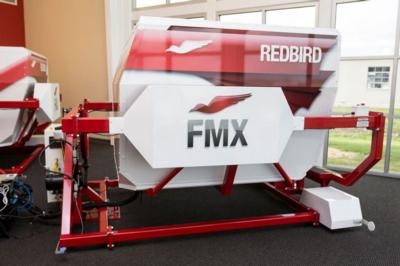Mon, Jul 20, 2015
Some General Help For Those Participating In Simulated Spot Landing Contest
By Maria Morrison
Do you think you have what it takes to land a virtual airplane on a specific spot on a virtual runway? If you do, the EAA Spot Landing Contest might just get you and a friend in to AirVenture 2016 for free.

Using Redbird flight simulators, Oshkosh AirVenture is sponsoring a daily virtual Spot Landing contest for anyone-certified pilot or not-attending the airshow. The simulation begins on a stable approach to the runway and it is up to the pilot to land the airplane as close as they can to a pre-determined spot. Meanwhile, their landing is broadcast to those awaiting their turn via TV. All those who try to land the simulator will receive a pin for their participation. When the contest ends each day at 5:00 pm, the first, second, and third place winners are determined. The contestant closest to the spot is awarded two week-long wristbands to AirVenture 2016. Second place wins two seats on the Ford Tri-Motor, and third gets two tickets for the Bell 47 helicopter. The next morning, those people are announced in AirVenture Today and on the EAA Radio before the contest begins again.
Spot landings are easy to learn but difficult to master. The key to landing where you want is to make that spot the only constant on your windshield. The spots you will land short of will pass upwards on your windshield, and places you will land long for move downwards on your windshield. The spot that you will land on will not be moving.
Another key to spot landings is to remember the old saying: “pitch for airspeed, power for altitude”. You want to maintain a stabilized approach so that you can remain in control of everything. If your final approach speed is 70 mph, trim for 70 mph. That way, if you end up high, you can reduce power and you will descend without changing your airspeed. The other option, both decreasing power and changing pitch, would be changing two variables at once.
In a spot landing, you want to eliminate as many variables as possible. Make power adjustments as usual, extend flaps (if you have them) when you always do, and fly the approach at the speed you are used to. When making a spot landing, you might want to set your aim point slightly before the actual spot to compensate for the flare, but not by much.
(Image provided by Redbird)
More News
Aero Linx: Model Aeronautical Association of Australia MAAA clubs are about fun flying, camaraderie and community. For over 75 years, the MAAA has been Australia’s largest fl>[...]
Touchdown Zone Lighting Two rows of transverse light bars located symmetrically about the runway centerline normally at 100 foot intervals. The basic system extends 3,000 feet alon>[...]
“Discovery and innovation are central to our mission at Virgin Galactic. We’re excited to build on our successful record of facilitating scientific experiments in subor>[...]
How To Get A Story On Aero-TV News/Feature Programming How do I submit a story idea or lead to Aero-TV? If you would like to submit a story idea or lead, please contact Jim Campbel>[...]
Student Pilot Reported That During Rotation, “All Of A Sudden The Back Of The Plane Kicked To The Right..." Analysis: The student pilot reported that during rotation, “>[...]
 ANN's Daily Aero-Linx (05.02.24)
ANN's Daily Aero-Linx (05.02.24) ANN's Daily Aero-Term (05.02.24): Touchdown Zone Lighting
ANN's Daily Aero-Term (05.02.24): Touchdown Zone Lighting Aero-News: Quote of the Day (05.02.24)
Aero-News: Quote of the Day (05.02.24) ANN FAQ: Contributing To Aero-TV
ANN FAQ: Contributing To Aero-TV NTSB Final Report: Cirrus Design Corp SR20
NTSB Final Report: Cirrus Design Corp SR20



